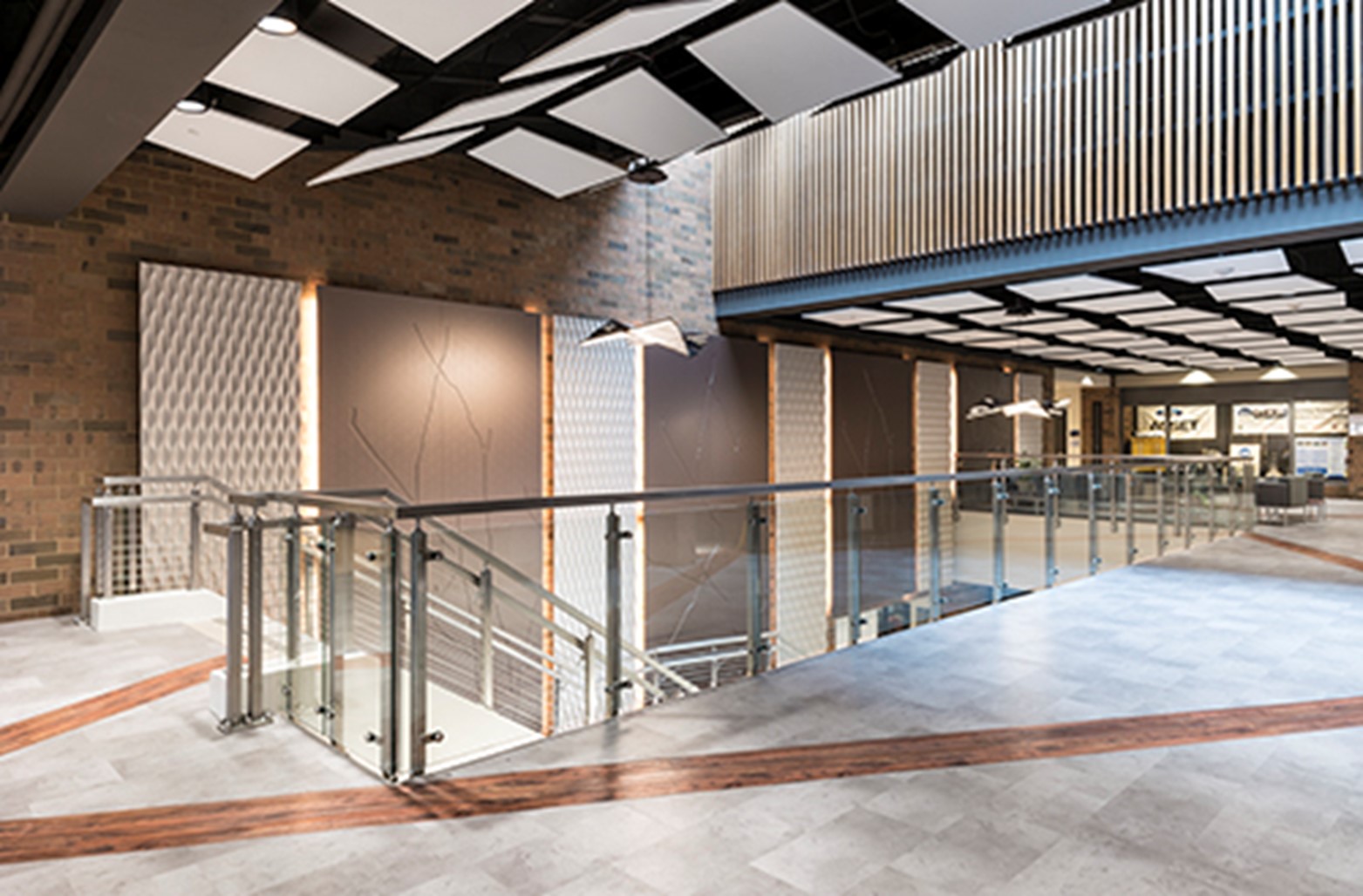Challenging the Perceptions of Using Tempered-Laminated Glass
In 2015, the International Building Code (IBC) was updated to reflect new safety standards. One of the principal changes required fully tempered or heat-strengthened laminated glass. IBC 2015 is where all architects, glaziers and fabricators should be headed—if not working toward already. At the end of the day, railing systems are life-safety products and tempered-laminated glass offers unmatched performance for safety and security.
While using tempered-laminated glass brings these safety and performance benefits, it also comes with varying challenges at the design and installation end of it—or so it is commonly perceived. Here’s a look at top perceptions and why they don’t have to impact design or slow down installation.
The Case for a Stronger & Safer Glass Solution
Tempered-laminated glass is used with the intent of protecting individuals from falling glass. Per IBC 2015, monolithic tempered glass may only be used where there is no walkway under the glass, or if the walking surface is permanently protected from the risk of falling glass. It’s the laminate that allows the two panels to remain together when broken, keeping the glass in the frame to minimize injury from broken or falling glass. From a performance standpoint, it can also take a higher load and deflect further before breaking.
Myth-Busting the Challenges of Tempered-Laminated Glass
It performs poorly in certain climates: It’s not that it can’t or won’t perform, but designing with tempered-laminated glass requires closer attention to climates and locations that bear moisture and temperature variances. That’s because laminated glass performance may vary under climate conditions including high humidity, storm zones, varying temperatures and even high saltwater conditions. As such, it’s important to look beyond the glass panels to the interlayers, surrounding materials and application as well.
Interlayer performance doesn’t stand up to the task: There are a variety of interlayers in the market with each having variations in their properties. Polyvinyl butyral (PVB) is the standard for safety glass as it offers strong binding, clarity and flexibility. The challenge is that its interlayer film is very sensitive to moisture, which makes it difficult in wet environments.
An alternative to a PVB interlayer is using a strengthened or stiffened Ionoplast structural interlayer. Originally brought to market by DuPont SentryGlas® and more recently by Kuraray to name a few, Ionoplast provides a stronger coupling effect between the glass panels which increases the strength of the glass structure well beyond traditional PVB limits. It allows for higher loads with the same glass thickness which is ideal for hurricane or high-impact areas, or potential reduction in glass thickness compared to alternative options for the same load requirements. It’s also optimal for glass balustrades in exterior applications, due to its clearer properties and lesser susceptibility to moisture absorption.
Another alternative is ethylene-vinyl acetate (EVA), which offers long-term weather resistance to moisture. And just like PVB, it provides a level of impact resistance.
Understanding the application on the front end, whether it’s an exterior or interior application, potential exposure to moisture, and impact resistance will go a long way in selecting the right interlayer solution and achieving the desired performance or an easier installation.
It creates adjacent material incompatibility: For wet glaze applications, the grout used with the tempered-laminated glass requires consideration, too. Portland-based grouts are the most common and often used by default—but there are documented issues with their material compatibility. A good bet is to check with the laminated glass manufacturer to select an interlayer that has supportive test data to mitigate possible contamination.
Dry glaze is a newer alternative option that eliminates wet glaze compatibility considerations. Adjacent material compatibility also extends to any caulking material used at the installation location and the presence of moisture or heat and cold in relation to expansion and contraction—also an important consideration for outdoor applications in moist and varying climates.
You Don’t Have to Do It Alone

As glass continues to be used more and more to meet today’s designs that are focused on creating more clean and open environments, safety will also continue to be a big part of the picture—as will tempered-lamented glass which plays a critical role in safety and minimizing injury. Yet with the benefits come challenges, but challenges that can be overcome. The use of tempered-laminated glass doesn’t have to slow you down or get in the way of customer satisfaction.
As you assess your needs and application for the next glass railing system job, don’t hesitate to turn to the experts to help mitigate the challenges of working with tempered-laminated glass.
